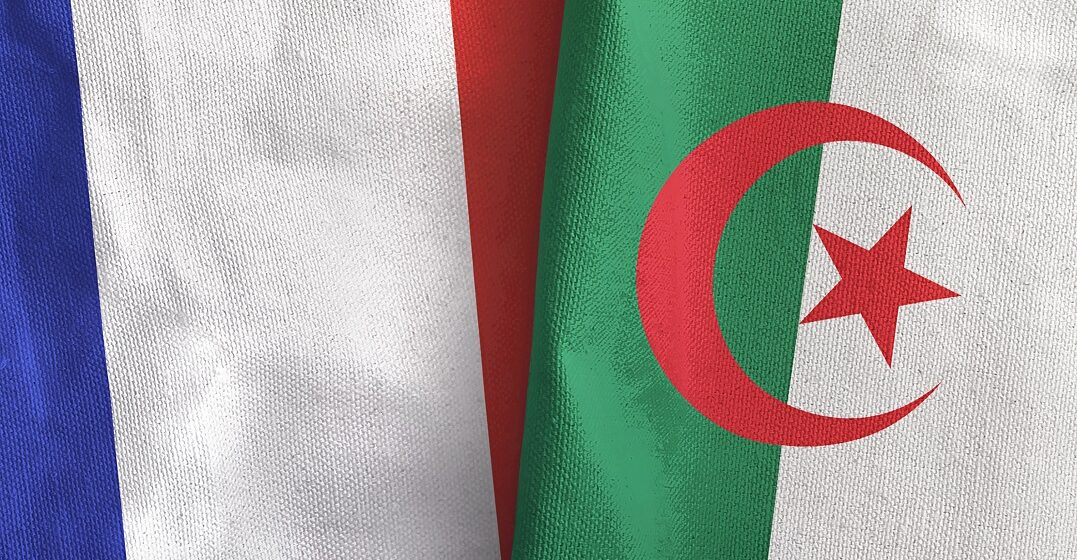Updated on June 4, 2024

A brief history of Algerians in France

From Algeria becoming a French colony nearly two centuries ago to the continuing struggles and successes of Algerian immigrants today, Franco-Algerian history is rich and varied. It is, of course, not without its darker chapters, the most significant of which took place during the eight years of the Algerian War. And yet, the story of Algerians in France is a story of persistence and constant cross-cultural exchange. Through various waves of immigration, the number of Algerians in France has kept growing and Algerians have influenced France’s society and language in surprising ways.
For instance, advanced learners of French looking for a new challenge may want to learn Verlan. This argotic language has proven popular among young people, especially in poor areas with a large immigrant population. It’s no coincidence that one of the most common words in Verlan is beur, which comes from arabe. In this and countless other ways, Verlan epitomizes the creative ways in which Algerians have adopted and adapted French language and culture. Let’s look now more deeply at their history.
If you ask French people, many of them will probably tell you that Algerian immigration to France started after the end of World War II. Indeed, from 1945 onwards, Algerians immigrated to France in much higher numbers and at a much faster pace.
But the history of Algerian immigration to France actually began much earlier, at the tail end of the 19th century. At the time, large numbers of single Algerian men came to France for work. They moved to large French cities, like Paris, Marseille and Lyon, for one to two years before returning home and being replaced by new temporary migrants from Algeria. Considered cheap labor by the French, these Algerian immigrants often performed blue-collar, low-paid jobs as dockers, bricklayers and drivers. In the north of France and in the central city of Saint-Étienne, many worked in the coal mines. According to figures from 1912, between 4,000 and 5,000 Algerians lived and worked in France — with about 1,000 in Paris alone.
During World War I, France relied on the populations of its colonies to fill its armies and factories. This is how about 800,000 workers and 175,000 soldiers from Algeria contributed to the war effort. After the end of the war, the trend continued, this time to help rebuild the country. If Algerian immigrants kept coming to France on a temporary basis, their number was now much bigger. As of 1924, there were about 100,000 Algerians in France. No longer confined solely to low-paying, back-breaking work, these immigrants also worked in industries such as catering, services, communication and administration.
After World War II, an even larger number of Algerians moved to France to help rebuild the country and contribute to its economic recovery. This period, from about 1945 to 1973, is known as les Trente Glorieuses (the 30 Glorious), in reference to nearly three decades of economic growth. This was no longer a temporary immigration, though. Algerian workers now came to stay and even brought their families over, especially after the end of the Algerian War.
It’s impossible to talk about Franco-Algerian relations without mentioning the Algerian War, which took place from 1954 to 1962. By that point, Algeria had been a French colony for over a century. The decolonization war was marked by guerilla warfare and acts of torture on both sides. It was also a civil war that opposed Algerian nationalists, many belonging to the Front de libération nationale (National Liberation Front, or FLN) and the Algerians recruited by the French army, better known as Harkis.
On March 18, 1962, the signing of the accords d’Évian (the Evian agreements) put an end to the conflict and Algeria officially became independent on July 3, 1962. As a direct consequence, the so-called Pieds-Noirs (Black Feet, as per the nickname given to the European-Algerians) escaped to France, alongside about 90,000 Harkis. Unfortunately, not all Harkis were able to flee and several tens of thousands were killed in retaliation after the end of the war.
To this day, the Algerian War remains a sensitive topic between France and Algeria. It’s worth noting that the two governments disagree on the number of Algerian casualties. According to France, between 250,000 and 300,000 Algerians died in the conflict, civilians included. The Algerian state differs, claiming that the correct figure is closer to 1,000,000.
According to 2019 figures from the Institut national de la statistique et des études économiques (National Institute of Statistics and Economic Studies, or INSEE), 877,800 immigrants living in France were born in Algeria. This represents 12.5% of the total immigration population in France.
Considering the various waves of immigration in the last century and how many Algerians live in France today, French society has been forever transformed. Islam is now the second religion in France and Arabic is the most widely spoken minority language in France. And even if France is world-famous for its haute cuisine, several Arabic dishes, like kebabs and couscous, have become common — and not just among Algerians settled in France.
Of course, there is a darker side to the story. Poor living conditions in the cités (the name often given to projects or estates), a higher unemployment rate and tensions between the police and the youth can paint a dire picture. But there are also success stories. From football to stand-up comedy, an increased number of celebrities claim Algerian origins. In the arts, French music has benefited from foreign influences such as Raï, a type of Algerian popular music.
Between colonization, immigration and the war for independence, the interconnected history of France and Algeria is full of dark and even violent episodes. Today, Algerians in France represent the biggest percentage of immigrants. While this comes with significant issues, especially regarding employment and integration, it also brings benefits that have changed and enriched the French language and culture for good.